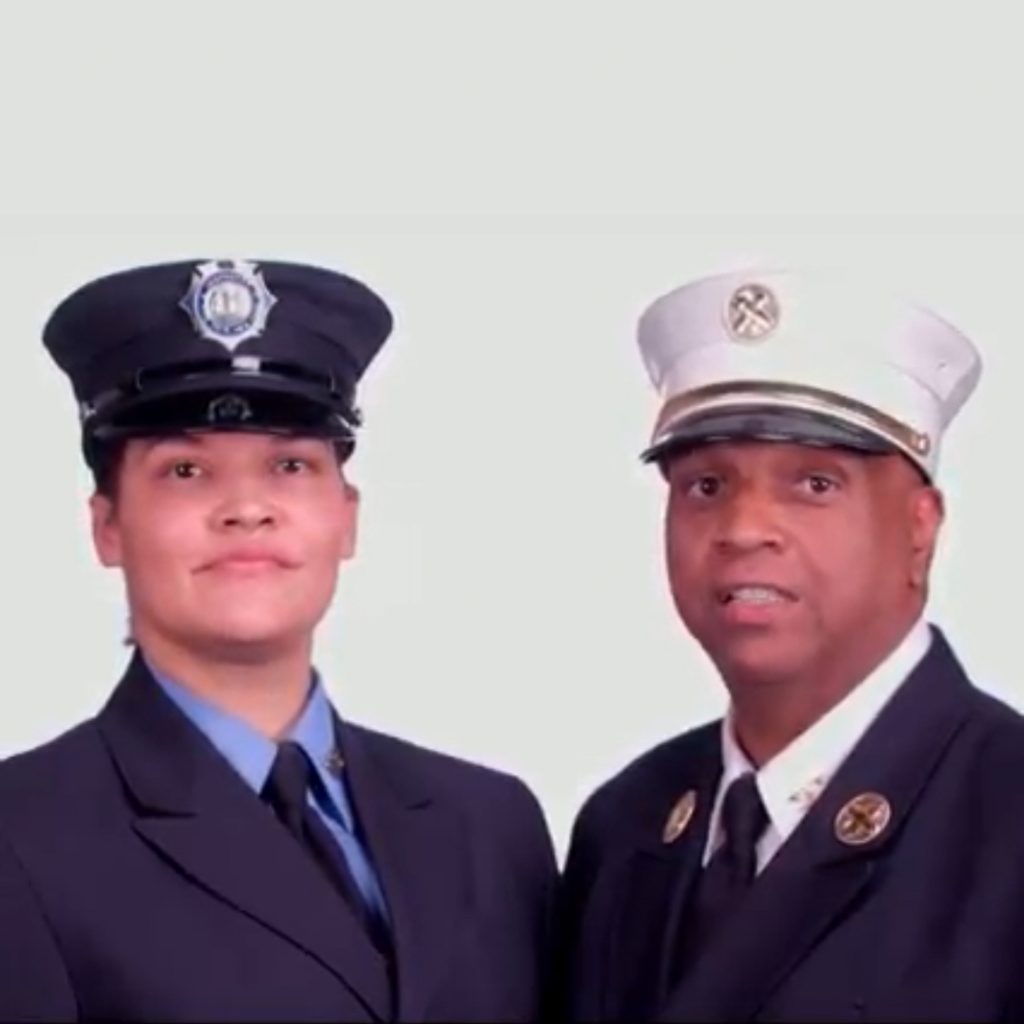There’s a videographer Joseph John Ramos, with the handle @THEMAJESTIRIUM1, whose posts, many videotaped on the Upper West Side, capture NYC firefighters in action as they race to fires. Without words, the posts honor the commitment of the men and women of FDNY and other emergency services who serve NYC.
The FDNY Foundation also produces its own social media for New Yorkers conveying very specific expert guidance on prevention and protection through videos and podcasts posted online.
Take, for example, fire escapes. Forget about scenes from Romeo & Juliet, Pretty Woman and West Side Story: air conditioners, flowerpots and barbecues. Fire escapes are not balconies or terraces. And, locking or blocking fire escapes is illegal – period. The FDNYSMART video – “If You Live or Work in a Place that has a Fire Escape” (linked) is both memorably positive and firmly to the point. It’s also unmistakably serious. The takeaway is fire escapes should be “100 percent unobstructed”.
There are an estimated 200,000 buildings with fire escapes in NYC. These are older buildings since adding fire escapes to new buildings was prohibited by the building code in 1968. Many of these buildings, like the seven-story, 60-unit apartment house at 2020 Broadway, built in 1900, have become to passersby part of the landscape. You might, however, look beyond the four fire escapes (three facing Broadway, one looking out on 69th Street) to notice the two masonry guardian lion sculptures with shields above the doorway, which is flanked by two polished stone columns. Also, check out the decorative bands of masonry that ornament the building’s facade. Although fire escapes were mandated by law in 1896, a 1920 photograph of 2020 Broadway from the New York Public Library digital archive shows no fire escapes. A 1940s tax photo, blurry though it is, allows the viewer to make out the Seminole Hotel name on the entry canopy. But, clearly, there are no fire escapes. Why didn’t this hotel building have fire escapes until at least the 1940s? The Atlantic offers a credible explanation in a discussion of the early 20th-century fire safety codes. “Hotels, factories, and schools also found themselves looped into the fire-safety trend, although hotels fought determinedly to shield their guests from what they argued were vacation-ruining additions. What guest, proprietors reasoned, would stay in a hotel that constantly reminded them of a potential catastrophe?”
The installation of iron and steel fire escapes in NYC goes back to the middle of the 19th Century and the beginning of the 20th Century. “Early regulations in New York and Philadelphia were codified and paved the way for most major U.S. cities to enact fire-escape legislation by the 1890s,” according to an article in The Atlantic (February 25, 2018). Among other devastating incidents, the 1911 Triangle Shirtwaist Factory fire resonated with the public because it appeared that the failure of the one fire escape to hold the weight of all those trying to use it might have been preventable.
Even today, vulnerabilities common to fire escapes are rust, corrosion, and deterioration, possibly causing failure of the construction to sustain weight reliably. That same FDNYSMART video tells NYC residents who find signs of rust on a portion of their fire escape or believe it is not receiving adequate attention from the super or landlord to report it to 911.
Mandated Fire escape certification is multifaceted, according to one of a number of companies that specialize in this work: “Our fire escape certification comprises inspection and load testing to ensure your building’s fire escape complies with the codes and regulations as enforced by the DOB. The crew….is extensively trained, licensed, and qualified to implement the latest tools and techniques necessary to examine the potential problems in your fire escape,” is how Fire Escape Repair NYC, one of a number of companies, described this specialized process.
A different FDNYSMART video, Create and Practice Your #FDNY Escape Plan (linked), is posted on YouTube and Facebook with details on planning and rehearsing a response in the event of a home fire. In addition to supporting requirements for ongoing inspection and certification of fire escapes, FDNY uses social media and provision of ongoing in-person community education to prevent and mitigate potential death and property damage. FDNY educational sessions for groups beginning with kindergarteners and up may be requested and scheduled online. Educational brochures are available in 10 languages.
Fire escapes, like water towers, have taken on an iconic status in NYC and are likely here to stay, albeit with ongoing restrictions and temptations to bypass them. If fire escapes have long had the lure of increasing personal space and the illusion of an inexpensive balcony – it’s not worth being trapped in a fire – that’s a mental stop sign.

 By
By